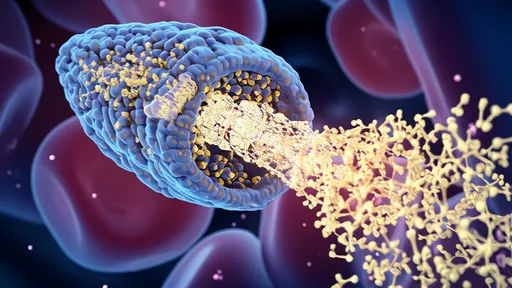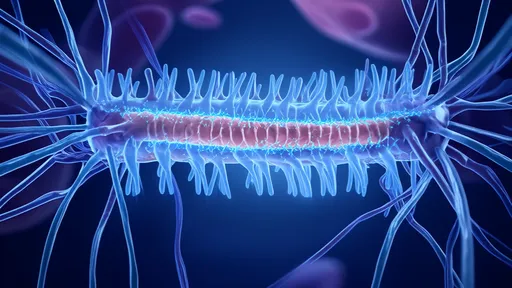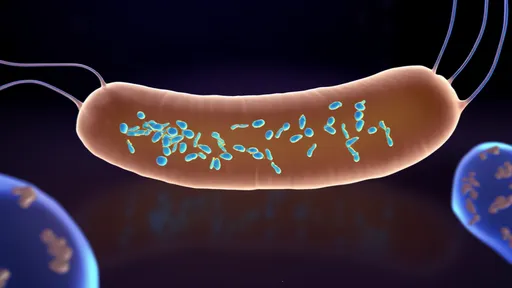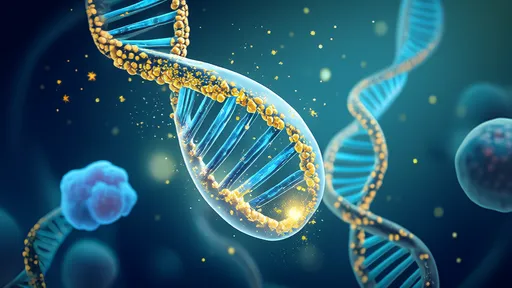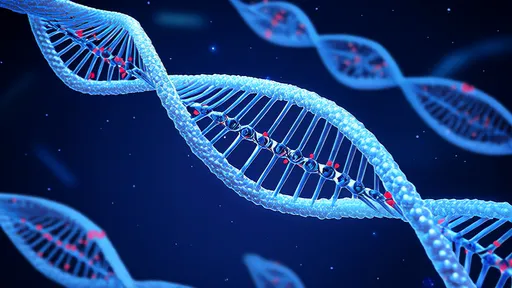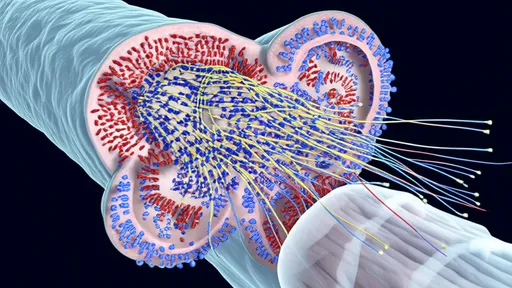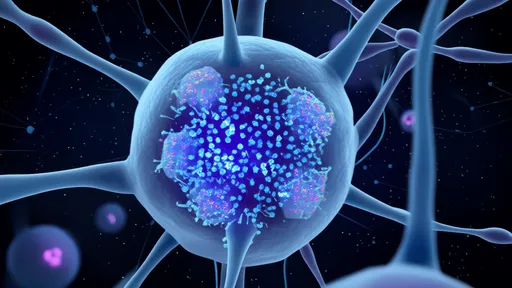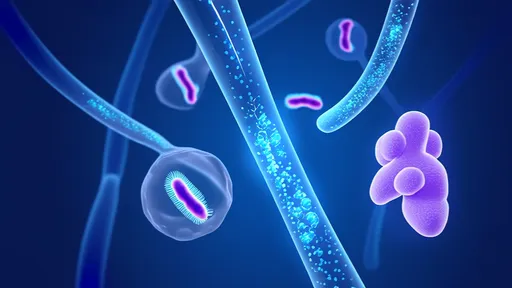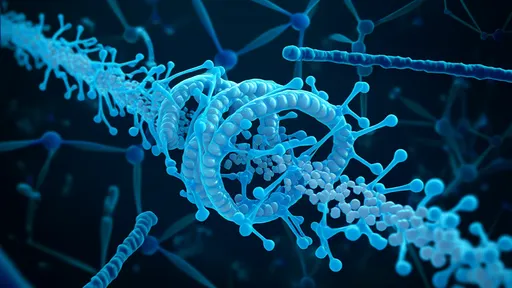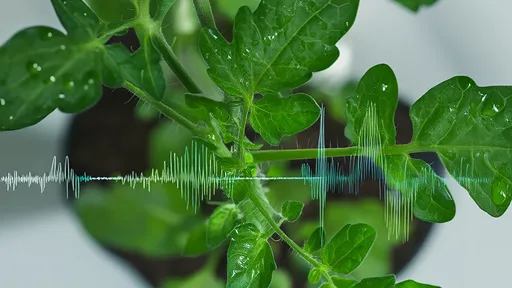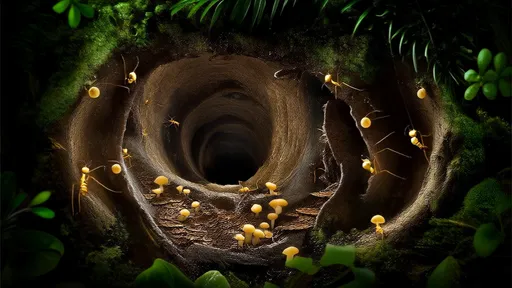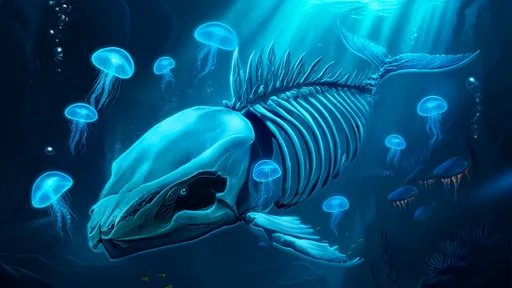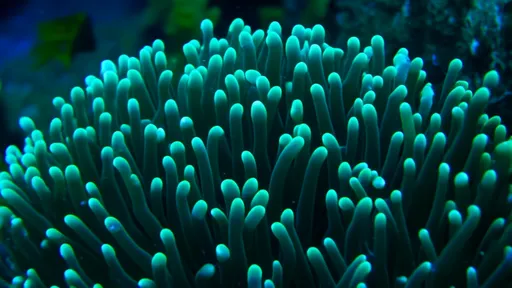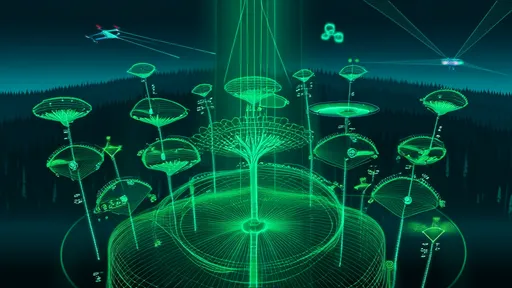In a groundbreaking development for ecological research and climate science, researchers have harnessed advanced LiDAR technology to map the photosynthetic efficiency of trees across vast forested areas. Dubbed the "carbon pulse" of forests, this innovative approach provides unprecedented insights into how trees absorb and process carbon dioxide at an ecosystem scale. The implications for understanding carbon sequestration, forest health monitoring, and climate change mitigation strategies are profound.
The Science Behind the Canopy Scan
Traditional methods of measuring photosynthesis relied on labor-intensive leaf-level measurements or satellite imagery with limited resolution. The new system employs airborne LiDAR (Light Detection and Ranging) equipped with specialized spectral sensors that detect subtle variations in chlorophyll fluorescence - an indirect indicator of photosynthetic activity. As laser pulses penetrate the forest canopy, the returning signals create detailed 3D maps showing not just tree structure, but their physiological activity across different layers of the forest.
Dr. Elena Voskresensky from the Global Forest Observatory explains: "What we're seeing is essentially the forest breathing in high resolution. The LiDAR system captures the faint glow of chlorophyll fluorescence during photosynthesis, allowing us to distinguish between trees operating at peak efficiency and those under stress - all without touching a single leaf." This non-invasive approach enables researchers to monitor much larger areas than previously possible while capturing variations between individual trees and species.
Revolutionizing Carbon Accounting
The implications for carbon cycle science are particularly significant. Current models of forest carbon sequestration often rely on generalized estimates. The LiDAR-derived photosynthesis maps reveal striking variations in carbon uptake capacity even within seemingly uniform forest stands. Early findings from test flights over Amazonian rainforests show that approximately 15% of trees account for nearly 40% of the carbon absorption - a finding that could dramatically reshape conservation priorities.
Forest ecologist Dr. Rajiv Patel notes: "We've discovered that carbon uptake isn't evenly distributed like we assumed. There are super-absorbers - often larger, older trees - that play outsized roles in the carbon cycle. Protecting these carbon champions might be more effective for climate mitigation than blanket approaches." The technology also detects stress responses to drought or disease before visible symptoms appear, enabling proactive forest management.
From Research to Climate Solutions
Beyond scientific research, the applications extend to practical climate solutions. Carbon offset programs could use these maps to verify sequestration claims with unprecedented accuracy. The data helps identify ideal locations for reforestation projects by predicting photosynthetic potential based on topography, microclimate and existing vegetation. Some governments are already exploring the technology for monitoring compliance with international climate agreements.
However, challenges remain in scaling up the technology. The high-resolution systems currently require low-altitude flights, making widespread implementation costly. Researchers are working on adapting the technology for drone use and eventually satellite deployment. As the technology matures, it may become standard practice for forest management worldwide, providing real-time monitoring of Earth's vital carbon sinks.
The Human Element in High-Tech Ecology
Surprisingly, this high-tech approach is leading to renewed appreciation for traditional ecological knowledge. In several cases, the LiDAR maps have confirmed indigenous practices of selective conservation that modern forestry had dismissed as anecdotal. The technology bridges cutting-edge science with ancient wisdom by quantifying what some forest communities have understood observationally for generations.
As climate change accelerates, understanding the nuanced workings of forest ecosystems becomes increasingly urgent. The ability to map photosynthesis across landscapes represents more than technical achievement - it offers a new lens through which to view and value these complex living systems. With forests playing a critical role in global carbon balance, such innovations may prove indispensable in the coming decades of environmental challenges.
For decades, the blood-brain barrier (BBB) has stood as a formidable gatekeeper, selectively shielding the brain from harmful substances while frustrating efforts to deliver life-saving therapeutics. This biological fortress, while essential for protecting our most vital organ, has rendered many promising treatments for neurological disorders ineffective. Now, a groundbreaking approach combining protein engineering and artificial intelligence is cracking the code to safe BBB penetration, potentially revolutionizing treatment for Alzheimer's, Parkinson's, and brain cancers.
In a groundbreaking development that could revolutionize the treatment of spinal cord injuries, researchers have successfully engineered hydrogel-based optical fibers capable of mimicking neural pathways. These "neural optical fibers" represent a fusion of advanced materials science and neurobiology, offering new hope for patients with previously untreatable damage to their central nervous system.
In a groundbreaking discovery that could revolutionize our approach to plastic waste, scientists have identified a surprising ally in the fight against polyethylene pollution: the humble wax worm. More specifically, the bacteria residing in the gut of these caterpillar-like creatures have demonstrated an extraordinary ability to break down one of the world's most stubborn plastics. This finding opens new avenues for tackling the global plastic crisis through biological means.
In a groundbreaking development that challenges our understanding of aging, scientists have demonstrated the potential to reverse cellular aging through a technique called transient reprogramming. This approach temporarily rewinds the epigenetic "clock" of cells without erasing their identity, opening new possibilities for regenerative medicine and age-related disease treatment.
In a groundbreaking leap for precision medicine, researchers have unveiled a light-controlled CRISPR delivery system using DNA-origami "nanodrones" – a fusion of nanotechnology and gene editing that promises unprecedented control over therapeutic targeting. This innovation, emerging from a collaboration between bioengineers and geneticists, reimagines drug delivery by combining the programmability of DNA nanostructures with the spatial precision of optogenetics.
In a groundbreaking study that could reshape our understanding of consciousness, neuroscientists have identified the thalamic reticular nucleus (TRN) as a potential "rhythmic switch" governing wakefulness through gamma wave modulation. This almond-shaped inhibitory structure, often described as the brain's gatekeeper, appears to orchestrate states of awareness by tuning neural oscillations like a conductor leading a symphony of consciousness.
For decades, chronic pain has remained one of medicine's most elusive challenges – a complex interplay of biological, psychological, and social factors that often defies conventional treatment. Now, groundbreaking research into the spinal cord's neural "fingerprints" of pain is revolutionizing our understanding of how persistent pain becomes etched into the nervous system. Scientists are mapping specialized neural circuits that appear to encode chronic pain with remarkable specificity, opening new avenues for targeted therapies.
In a groundbreaking discovery that reshapes our understanding of brain metabolism, researchers have identified glial cells as the unsung architects of neuronal energy distribution. The study reveals how these long-overlooked support cells orchestrate the precise mitochondrial allocation to neurons, challenging the neuron-centric dogma of neuroscience. This paradigm shift underscores glial cells' role as metabolic conductors in the symphony of brain function.
Scientists have uncovered a startling new pathway by which gut microbes communicate with the brain at lightning speed. Dubbed the "10-second gut-brain superhighway," this discovery centers on the vagus nerve's ability to transmit microbial signals faster than previously thought possible. The findings could revolutionize our understanding of conditions ranging from depression to irritable bowel syndrome.
In a groundbreaking discovery that bridges molecular biology and neuroscience, researchers have uncovered how the CPEB protein acts as a "molecular glue" to solidify long-term memories through an elegant phase transition mechanism. This finding not only revolutionizes our understanding of memory persistence but also reveals nature's ingenious solution to maintaining information at the molecular level.
In a groundbreaking discovery that blurs the line between botany and acoustics, researchers have uncovered evidence of tomatoes employing ultrasonic warfare against herbivorous insects. The study, published in Nature Plants, reveals how tomato plants emit high-frequency sounds when under attack - not as passive victims, but as active participants in their own defense.
In the dense rainforests of Central and South America, leafcutter ants have perfected an architectural marvel that puts human climate control systems to shame. These tiny engineers construct elaborate underground nests spanning hundreds of square feet, maintaining near-perfect temperature and humidity levels year-round – without using a single watt of electricity. As architects and engineers grapple with the urgent need to reduce building emissions, these insect-built structures offer profound lessons in passive climate regulation.
The depths of the ocean hold secrets that continue to astonish scientists, and among the most enigmatic phenomena is the "whale fall"—the carcass of a deceased whale sinking to the seabed. These massive organic deposits create transient ecosystems, supporting diverse marine life for decades. But beyond the visible scavengers and bone-eating worms, a hidden microbial world thrives, and within it, something extraordinary has been discovered: colossal bacteriophages, viruses that prey on bacteria, with genomes so large they defy conventional understanding.
In a groundbreaking discovery that could revolutionize coral reef monitoring, scientists have identified a natural early warning system for coral bleaching events. Certain coral species exhibit vivid fluorescent patterns when under thermal stress, acting as biological "sentry lights" that signal the onset of bleaching before visible damage occurs. This phenomenon, observed in reef-building corals across the Indo-Pacific, represents nature's own climate change alert system.
In a groundbreaking development for ecological research and climate science, researchers have harnessed advanced LiDAR technology to map the photosynthetic efficiency of trees across vast forested areas. Dubbed the "carbon pulse" of forests, this innovative approach provides unprecedented insights into how trees absorb and process carbon dioxide at an ecosystem scale. The implications for understanding carbon sequestration, forest health monitoring, and climate change mitigation strategies are profound.
